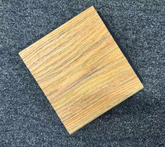A Closer Look at Roofing Underlayment: The Unsung Hero of Roof Protection
When it comes to roofing, most homeowners and property managers focus on the visible elements such as shingles, tiles, or metal panels. However, there is a crucial component that often goes unnoticed but plays a pivotal role in protecting your roof and home: roofing underlayment.
What is Roofing Underlayment?
Roofing underlayment, also known as roofing felt or tar paper, is a thin layer of material that is installed between the roof deck and the roofing material (shingles, tiles, metal panels, etc.). It serves as an additional barrier to protect the roof from water infiltration, wind-driven rain, ice dams, and other environmental elements.
Types of Roofing Underlayment
There are several types of roofing underlayment available in the market, each with its unique characteristics and advantages. The most common types include:
- Asphalt-saturated felt: Traditional and affordable, this underlayment is made of a paper or fiberglass base saturated with asphalt. It provides good protection against water and is easy to install.
- Synthetic underlayment: Made of polyethylene or polypropylene, synthetic underlayment is lightweight, durable, and resistant to tearing. It offers superior protection against moisture and can be left exposed for up to six months.
- Rubberized asphalt underlayment: This underlayment is made of a rubberized asphalt blend, which provides excellent waterproofing and flexibility. It is ideal for areas prone to high winds and heavy rainfall.
- Self-adhering underlayment: Also known as peel-and-stick underlayment, this type has an adhesive backing that adheres directly to the roof deck. It is easy to install and provides a strong, watertight seal.
Why is Roofing Underlayment Important?
Roofing underlayment plays a critical role in protecting your home from water damage, mold, and rot. It acts as a secondary barrier against leaks, especially in areas prone to heavy rain, snow, or ice buildup. Additionally, underlayment helps to improve the overall energy efficiency of your home by preventing heat loss through the roof.
In conclusion, while roofing underlayment may not be the most glamorous aspect of your roof, it is a vital component that should not be overlooked. Investing in high-quality underlayment can extend the lifespan of your roof, protect your home from water damage, and save you money on energy bills. So, the next time you're considering a roof replacement or repair, don't forget to give some thought to the underlayment. Your roof will thank you for it!














